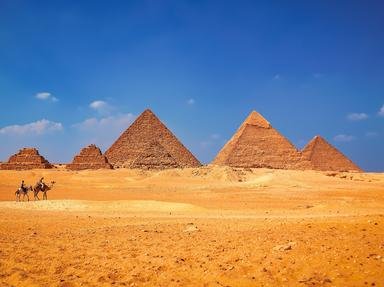Quiz Answer Key and Fun Facts
1. How many categories of funeral procedures were there?
2. People wanted to be buried on the Nile's western shore.
3. The chief embalmer wore a mask resembling which god?
4. Which organ was the only one not removed during mummification?
5. Name the dry, chemical substance used by the Egyptians to remove fluids from the body.
6. All of the items removed from the mummy during mummification were usually fed to the jackals.
7. How many canopic jars were placed in the mummy's tomb?
8. The embalmer removed the brain by opening the skull.
9. How many days did mummification usually take?
10. Which ancient Greek left behind the only known text describing the Egyptian mummification process?
Source: Author
ponycargirl
This quiz was reviewed by FunTrivia editor
bloomsby before going online.
Any errors found in FunTrivia content are routinely corrected through our feedback system.


